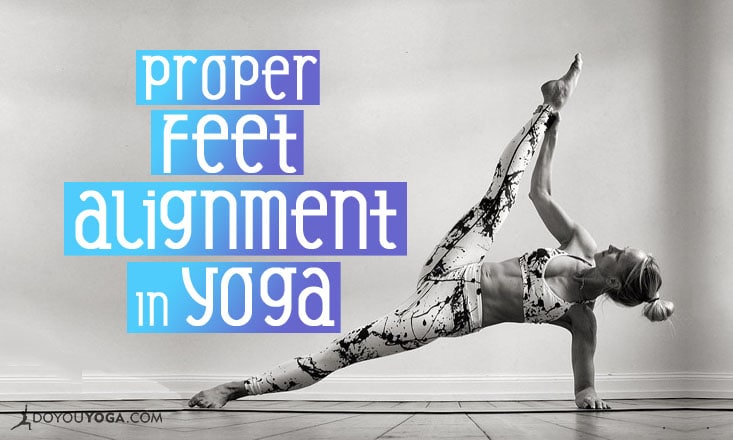On the surface, you just need to follow a few general guidelines for foot alignment in yoga and you’re set. In fact, for many, foot alignment is just another minor adjustment, or maybe it's second nature. But that’s not the case for everyone.
For some yogis, foot alignment is a difficult and takes very conscious work during asana practice. And if you’re one of the 3 million people per year who are diagnosed with flat feet in the US alone, spreading your toes and lifting your arch can be difficult cues to master.
So let’s break it down.
The feet are our foundation.
This sounds obvious, and it is. But just because it is obvious doesn’t mean we should ignore it. Poor foot alignment can set you up for injury and can prevent you from getting into certain postures. So remember to start each pose from the bottom up (or top-down, but the message is don't forget the feet!).
Generally, weight should be evenly distributed across the “4 points” of the foot.
Picture the bottom of your foot. Spread your toes. The ball of the foot has two points—one at the base of the big toe, and then across to the base of the pinky toe for the other. The base of the heel has, again, two points on either side. Sometimes picturing a rectangle on the bottom of the foot helps to distribute weight evenly between all four points.
Again, this is a general tip for proper foot alignment in yoga asana. Note: some teachers subscribe to the three points of the foot rather than the four. I personally like the symmetry of four and importantly, feel four distinct points in my body. Work with whichever fits your body best.
Lift your arches, or activate pada bandha.
Now that you have your weight evenly distributed, picture lifting your arches up. This is a tough one, especially if you have flat feet. Whenever you’re on the mat, practice energetically (and maybe physically depending on your feet) lifting the arches of the foot off the Earth.
The simultaneous grounding of the four points of the foot down, and the lifting of the arch up, mirrors the dance of equal and opposite forces that plays in many standing poses. Pada which means, foot, and bandha which usually means 'lock' but here refers to a lift or a harness pulling you up and supporting you.
Pada Bandha strengthens the feet and the muscles in the arch. It is only through sustained yoga practice and active, conscious awareness of the foot that you can cultivate this lift and begin to activate pada bandha with a few conscious movements.
Knees and feet are one.
Another fantastic general rule for aligning the feet: keep your knees in line with the center of your feet (and your feet in line with your knees). In standing poses, I like to generally direct my knee cap so it is in line with my second toe (of the same foot of course!).
Picture Virabhadrasana II for example. With the front leg bent, it is important to actively direct your knee cap in line with your second toe as there is a tendency to fall inward. This collapses the arch which is one clue that the posture is off (see points two and three above!) and tweaks the knee.
By aligning the knee to the second toe, you can safely practice this foundational posture without hurting the knee.
The back leg is straight and the knee faces the same direction as the back toes. Again, come back to the general rule of weight distribution. There is a tendency to collapse into the arch of the back foot, but by pressing firmly into the knife edge of the back foot to equalize weight distribution more, you’ll lift the arch and properly align the foot.
"Does this look right to you?"
And finally, when in doubt, ask! Your yoga teacher is there to help guide you through your practice and to keep you safe in your practice. Proper foot alignment will enable you to practice mindfully and safely.
So, there you have it. Distribute weight evenly. Lift the arches and activate ‘pada bandha.’ Line your knees up with the center of your foot in standing poses. And when in doubt, just ask.
Hopefully, these general tips help you put your best foot forward in your next class!
Image credit: Aneta Gab



